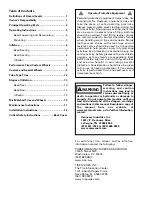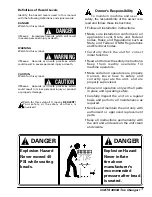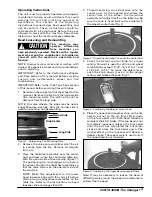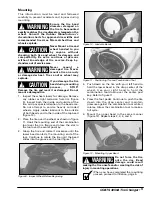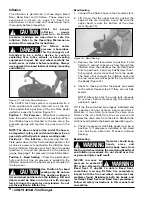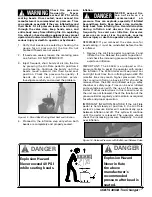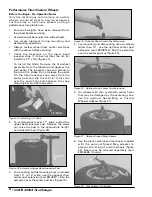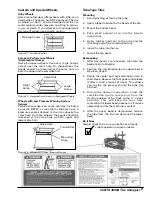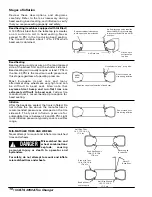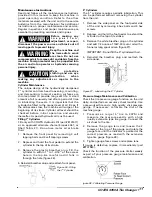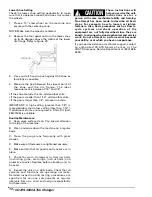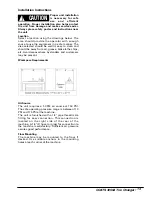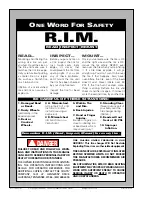
Operating Instructions
The unit must be properly operated and properly
maintained to help avoid accidents that could
damage the unit and injure the operator or
bystanders. This section of the Operating
Instructions manual review basic operations and
use of controls. These instructions should be
reviewed with all employees before they are
allowed to work with the machine. Keep these
instructions near the machine for easy reference.
Bead Loosening and Demounting
This machine may
operate differently
from machines you
have previously operated. Practice with a regular
steel wheel and tire combination to familiarize
yourself with the machine's operation and
function.
NOTE: Always review nicks and scratches with
owners of expensive wheel and tire combinations
prior to servicing.
IMPORTANT: Refer to the Performance Wheels
and Tires section of this manual before servicing
custom and performance wheel and tire
combinations.
IMPORTANT: Refer to the Tube Type Tires section
of this manual before servicing tires with tubes.
1.
Determine the correct side of the wheel for tire
removal. Remove the tire from the narrow side
(tire mounting side). Tire will not mount or
demount from the long side.
NOTE: On some wheels, the sides may be nearly
equal. Measure carefully. Only the narrow side is
used for mounting and demounting.
Figure 1 - Determining Tire Mounting Side
2.
Remove the valve core and allow all of the air
to escape from the tire. Remove all weights
from rim.
3.
Place the tire/wheel assembly over the center
post and down onto the contoured table top,
with the narrow side of bead seatup (figure 1).
The positioning pin must engage a lug hole in
the wheel. Position the tire/wheel assembly so
that the valve stem is on the operator’s side of
the machine.
NOTE: Make fine adjustments to the lower
bead loosener shoe with the shim kit before
placing mag or alloy wheel assemblies on the
table top. Refer to the instructions on bead
loosener shoe and pages 8 and 12.
4.
Thread centering cone clockwise onto the
center post. As the tapered end enters the
center hole of the wheel, the tire/wheel
assembly will adjust itself on the table top. Be
sure the cone is hand tight and is centered in
the wheel’s center hole (Fig. 2).
Figure 2 - Thread the Centering Cone onto the Center Post
5.
Check the detent control knob for proper
setting. Forward is used for all tire and wheel
combinations except 15”x4”, 16”x5” to 7”, and
17.5”x5.5” to 7.5”. To move the detent lever,
push the knob down, move it to the proper
setting, and release the knob (fig.3).
Figure 3 - Positioning the Detent Control Knob
6.
Place the upper bead loosener shoe on the tire
next to, but not on, the rim (fig.4). Press down
on the foot pedal until both bead looseners
complete their full stroke. If the top bead is not
completely loosened, release the foot pedal
until the unit has completed the full return
stroke and press the foot pedal again. The
ratchet effect on the loosener will deliver a
deeper stroke. The repeat cycle is used only if
the upper bead is not loosened.
Figure 4 - Positioning the Upper Bead Loosener Shoe
Note: If may be necessary to loosen the bead at
different points around the wheel circumference to
entirely free the bead.
COATS 4050A Tire Changer • 3
CAUTION
!
Narrow Side
Long Side
Drop Center


